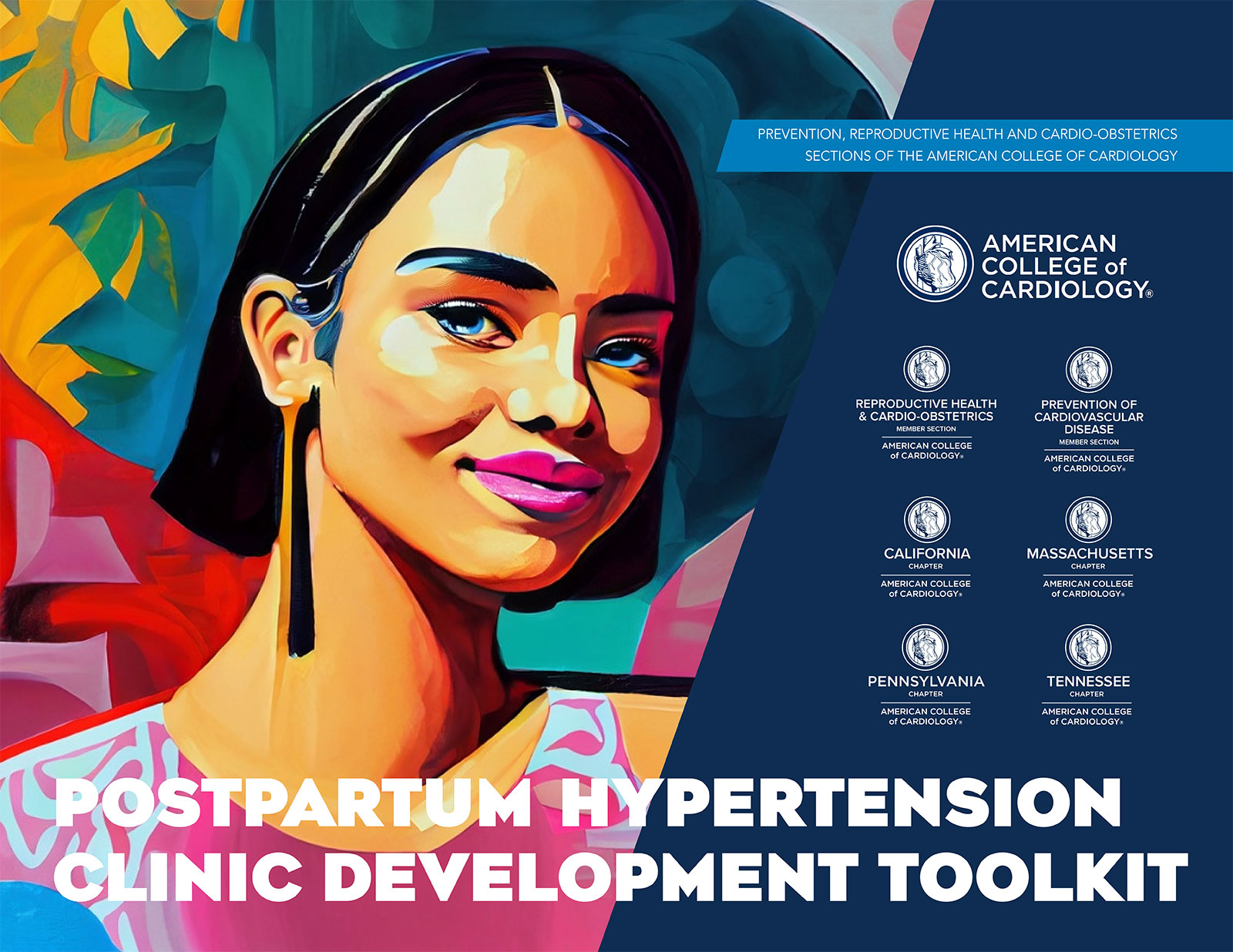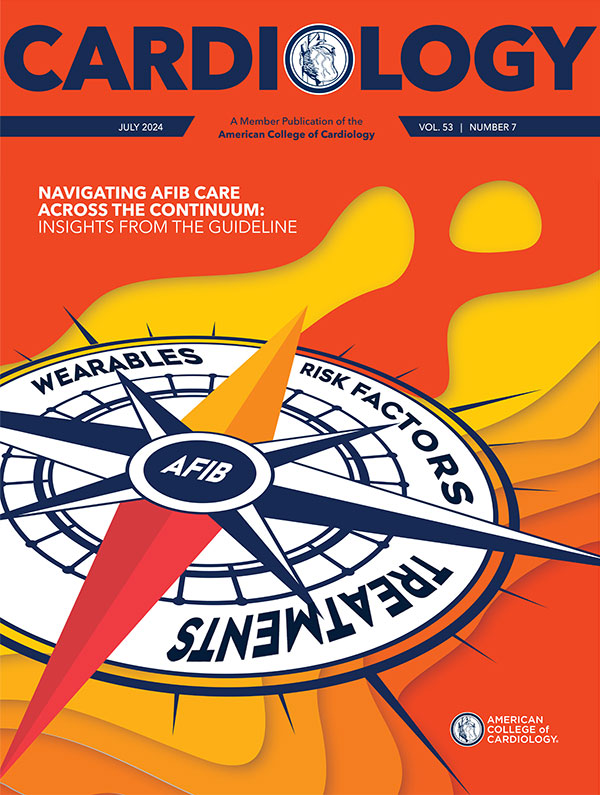Prioritizing Health | Improving Care of Patients With Hypertensive Disorders of Pregnancy

As the field of reproductive and maternal health has grown, awareness about the impact of hypertension during and after pregnancy on future cardiovascular health has also increased.
Hypertensive disorders of pregnancy (HDP) affect about 8% to 10% of pregnant individuals and includes hypertension that occurs during and after pregnancy, such as chronic hypertension, gestational hypertension, preeclampsia, eclampsia and postpartum hypertension. Individuals who are Black, over the age of 35 years, and those with obesity, a BMI >30 and diabetes are at higher risk.
To help increase awareness of HDP and bridge gaps in care, a new Postpartum Hypertension Clinic Development Toolkit, created jointly by the ACC's Prevention of Cardiovascular Disease Member Section and the Reproductive Health and Cardio-Obstetrics Member Section in collaboration with the ACC Pennsylvania Chapter and others, offers guidance for developing postpartum hypertension clinics and best practices for transitions in care.
Three Key HDP Takeaways
- Recognize that HDP is common, affecting one in 10 pregnant individuals, and is associated with significant postpartum morbidity and increased future cardiovascular risk.
- Care of HDP can be improved through initiatives like dedicated postpartum hypertension clinics and home blood pressure monitoring programs in general cardiology practices.
- Future research will guide the establishment of optimal blood pressure goals for this population and how to achieve them.
The toolkit is geared for all members of the care team: ob-gyn specialists, cardiologists, APPs, NPs and PAs and more, and recognizes the need for multidisciplinary care.
"There was a real need to create something that helps guide clinicians from different systems, not just academic tertiary care centers, but also clinicians in more rural locations and nonacademic centers who are taking care of individuals with HDP and want to build an HDP clinic or remote blood pressure monitoring programs," says Malamo Countouris, MD, AACC, the toolkit's lead creator and writer.
Toolkit Components
The toolkit consists of seven parts and can be downloaded as a whole or as individual sections.
- Part I discusses how to start a postpartum hypertension clinic for individuals with HDP, from conceptualizing the clinic to reviewing administrative logistics and coding.
- Part II focuses on clinical models and framework for the clinic, including clinical models and operations, clinic activities, and coding and billing.
- Parts III and IV focus on obstetric considerations after HDP and managing blood pressure postpartum.
- Parts V-VII provide clinic example documents and other materials, patient education resources, and appendices and references.

Special Thanks to the Toolkit Authors
Malamo Countouris, MD, AACC; Natalie Ann Bello, MD, FACC; Colleen Harrington, MD, FACC; Jennifer Lewey, MD, FACC; Kathryn Lindley, MD, FACC; Megan Mclaughlin, MD, MPH; and Kayle Shapero, MD. The reviewers are Sri Adusumalli; Alisse Hauspurg, MD; Adi Hirshberg, MD; Deirdre Mattina, MD, FACC; Michael Rakotz, MD, and AMA Team; Rachel Sinkey, MD; and Eugene Yang, MD, FACC.
Although the toolkit provides information on how to start a clinic, the information is also valuable for clinicians who are not looking to start a clinic but want to improve how they provide care to their patients with HDP, perhaps through telehealth or remote blood pressure monitoring.
Countouris notes there are currently no standard guidelines for following patients with HDP, particularly after six weeks postpartum when they typically have their last visit with their obstetric clinician. At this point, she says about 40% of individuals still have hypertension and ideally should be transitioned from their obstetric clinician to their primary care clinician or cardiologist.
The toolkit aims to establish structured postpartum care for patients with HDP to help care teams follow up on necessary antihypertensive medication, screen for cardiovascular risk factors and talk to patients about long-term cardiovascular risk.
The toolkit also provides information on a "baseline" knowledge of treatment that all members of the care team should have. "Talking about contraception and breastfeeding are important in this population, and this toolkit helps cardiologists with these conversations," she says.
Click here to download the new ACC Postpartum Hypertension Clinic Development Toolkit.
A Lesson in Multidisciplinary Collaboration
The development of the Postpartum Hypertension Clinic Development Toolkit is a wonderful story of multidisciplinary collaboration across the ACC. The Pennsylvania State Chapter received a grant from the ACC, supplying funds for the writing, design and production of the toolkit.
The Chapter then collaborated with ACC's Reproductive Health and Cardio-Obstetrics Member Section, which led the effort, and in turn with the Prevention of Cardiovascular Disease Member Section under the leadership of Eugene Yang, MD, FACC. Other ACC Chapters including California, Massachusetts and Tennessee were also involved in the project.
Subsequent collaboration has extended to include the Million Hearts program of the Centers for Disease Control and Prevention (CDC). Million Hearts is including the Toolkit as part of the CDC's Hypertension Management Program. Click here to access the CDC's Hypertension in Pregnancy Change Package.
Clinical Topics: Diabetes and Cardiometabolic Disease, Prevention, Vascular Medicine, Hypertension
Keywords: Cardiology Magazine, ACC Publications, Hypertension, Pregnancy-Induced, Maternal Health, Reproductive Health, Pre-Eclampsia, Postnatal Care, Cardio-Obstetrics
